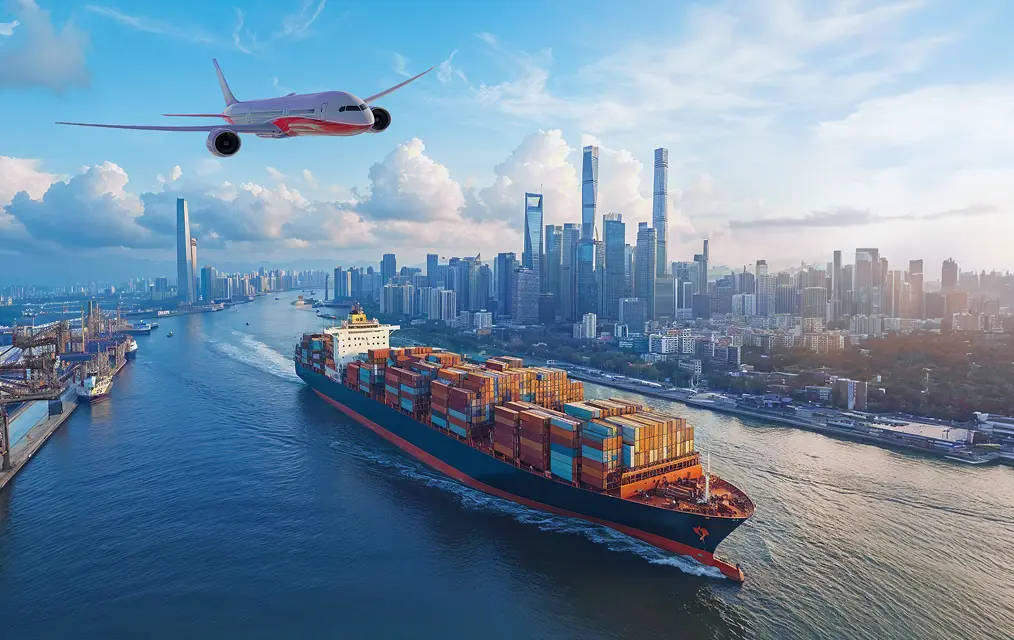From Sea to Sky: How to Choose the Right Type of International Transport

Over $30 billion worth of goods are lost annually to supply chain inefficiencies, including cargo theft, delayed shipments, and poor handling. These numbers are also about lost customer trust, profitability, and competitive advantage.
The Background
Supply chain vulnerabilities have always existed, but their impact has grown with the rise of global trade and e-commerce. In the U.S. alone, reports show that cargo theft incidents surged by 57% in the past year, according to CargoNet. Items like electronics, food, and pharmaceuticals top the list of stolen goods, and these thefts often go hand-in-hand with rising operational costs and shipment delays.
The scope of the problem goes beyond theft. As supply chains expand across borders and depend on multiple stakeholders, risks like cyber attacks, non-compliance, and communication breakdowns further complicate logistics management. At the same time, consumer expectations for fast and secure deliveries push businesses to find innovative solutions.
Companies that prioritize supply chain security and operational excellence gain a competitive edge. They reduce losses and enhance reliability while building trust and shaping positive customer experiences.
Ground, Air, or Sea: Which One to Choose and When
Choosing the correct mode of transportation can significantly impact cost, speed, and reliability. Ground transport via trucks or rail is often best for cross-border or regional deliveries, offering flexibility and affordability. Air shipping is ideal for high-value or time-sensitive goods, but it comes with higher costs. Sea freight handles bulk and oversized shipments efficiently over long distances.
Ground Transportation
Ground shipping, including full truckload (FTL), less-than-truckload (LTL), and rail options, is a versatile solution for regional and cross-border trade. It offers excellent flexibility in scheduling and routing, along with lower upfront costs compared to air freight, making it appealing for cost-conscious shippers.
Choose ground shipping when you need to move moderate volumes at manageable speeds without incurring air freight charges. It’s an ideal choice for shipments that can tolerate longer transit times or require direct-to-door delivery. Ground shipping also works well for distributing goods within shorter distances or across neighboring countries. Overall, it stands out as a cost-effective and adaptable option that remains truly essential for worldwide commerce.
Air Transportation
Air freight is the fastest shipping mode available, which makes it beneficial for high-value and time-sensitive products like perishable items or electronics. With frequent flight schedules and streamlined customs processes, air shipping often reduces transit times to days, providing a competitive advantage in markets where speed is paramount.
On the downside, air freight usually comes with higher transportation costs and stricter weight and size limitations. Besides, certain goods deemed hazardous or oversized may face prohibitive regulations.
Air shipping works best when every minute counts, such as launching new products, replenishing stock for seasonal demand, or fulfilling urgent backorders. Before opting for air freight, review packaging requirements to ensure your products meet airline standards and are adequately protected from handling risks.
Sea Transportation
Sea freight is the most cost-effective option for bulky, heavy, or non-urgent shipments, offering extensive capacity and flexible container choices such as Full Container Load (FCL) and Less than Container Load (LCL). It is especially suitable for businesses moving raw materials, machinery, and large consumer products.
While sea shipping is cost-effective, it has longer transit times due to port procedures, customs clearance, and potential weather-related disruptions. Delays can cascade throughout the supply chain, potentially affecting production cycles and customer delivery schedules.
Choose sea freight when cost savings outweigh speed requirements. For example, if you’re importing seasonal goods months in advance or shipping bulky equipment that does not require immediate delivery, sea transport is an ideal fit. Evaluate factors such as transit time, shipping route, and carrier reputation to mitigate risks and optimize costs.
Technology for Enhanced Security
Rising risks and challenges call for innovative solutions to address them adequately. Advanced technologies and tools like GPS tracking, RFID tags, and AI-driven monitoring systems are transforming how businesses safeguard cargo and handle deliveries.
GPS tracking enables real-time visibility of shipments, allowing logistics managers to detect deviations from planned routes instantly. RFID tags provide detailed insights into inventory movements, reducing the chances of theft or misplacement. Meanwhile, AI-powered platforms can analyze historical data and predict potential vulnerabilities.
Numerous case studies show that implementing GPS tracking and RFID technology across supply chains results in around 40% reduction in shipment delays and a significant decline in theft-related losses.
To take advantage of these technologies:
- Implement real-time tracking: Use GPS-enabled systems to monitor shipment routes and status continuously.
- Adopt RFID solutions: Integrate RFID tags for better inventory accuracy and transparency.
- Invest in predictive analytics: Leverage AI tools to forecast potential disruptions and risks.
Strengthening Human and Operational Processes
Despite advanced technologies, human and operational aspects of supply chain management have always been critical and will remain so for decades ahead. Employee training, clear communication, and strong partnerships form the backbone of a secure and efficient supply chain.
To strengthen human and operational processes:
- Train your team: Conduct regular workshops on cargo security, compliance, and emerging risks.
- Establish clear communication channels: Ensure stakeholders are informed and aligned on shipment details and protocols.
- Vet your partners: Collaborate with carriers and vendors that meet your security and operational standards.
Conclusion
Matching each shipment’s unique requirements with the right mode can significantly reduce risks, save costs, and foster positive customer experiences. Ground shipping offers flexibility and affordability for moderate-distance routes, while air freight delivers unmatched speed for time-sensitive goods. Sea transport provides cost-effective solutions for bulk or oversized cargo.
With the right shipping method, businesses can safeguard their assets, meet evolving customer demands, and drive sustained growth in today’s global marketplace.
